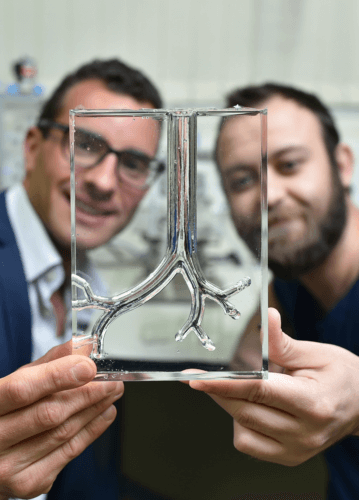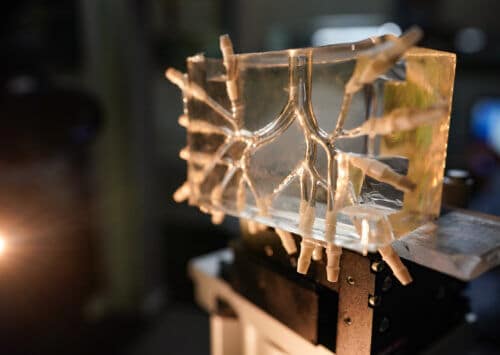The development may save the lives of patients suffering from acute respiratory distress syndrome (ARDS) - the main cause of death among corona patients

A research team led by Prof. Joshua Schnittman from the Faculty of Biomedical Engineering at the Technion is examining the effectiveness of an innovative treatment for acute respiratory distress syndrome (ARDS), the main cause of death from the new coronavirus SARS-CoV-2. The team is working with full vigor to advance the aforementioned research into clinical trials in the coming months. This is in light of the fact that today there is no treatment for the disease, and patients with it receive only supportive treatment that includes artificial respiration.
One of the main symptoms in ARDS is damage to the surfactant, a liquid that coats the lung's nadia - air sacs inside which oxygen is absorbed in the blood. The main function of the surfactant is to allow the lungs to inflate. It reduces the surface tension in the nadia and thus numbs the force that the lungs need to exert to allow a person to breathe.
Various studies (eg Rio & Malani, Jama, 2020) show that the corona virus damages the epithelial cells that secrete the surfactant in the lungs, and therefore Prof. Schnittman estimates that the damage to the surfactant production may be particularly severe in corona patients suffering from ARDS.
ARDS is a phenomenon that also exists among premature babies whose lungs do not yet produce surfactant. These premature babies are successfully treated by instillation of an external liquid surfactant into the lungs, but this method is not effective in adults. A possible reason for the failure of the treatment in adults is that due to the size of their lungs, a significant part of the surfactant accumulates in "pools" at the bottom of the lungs under the influence of gravity. The result is that some tissues are flooded with surfactant and others receive no surfactant at all.
This is the background for the development of a new therapeutic technology called LIFT - Liquid Foam Therapy, which was developed by Prof. Schnittman and Dr. Jan Ostrovsky and submitted for registration as a patent. This technology is designed to significantly improve the dispersion of the external surfactant in the lungs, by embedding the drug in foam or alternatively by foaming the drug itself. The viscosity of the foam, and the volume it occupies, allow it to disperse better between the branches of the lungs, distribute uniformly and return to its liquid form after reaching the destination.
The development of this technology continues within the framework of the "Nashima Medical" company, founded by Dr. Ostrovsky, Ms. Avital Frankel, Dr. Rami Fischler and Prof. Schnittman with the assistance of the Technion's business unit. Following the current pandemic, the company has accelerated the development of the said technology, and after the production of a prototype of the system has been completed, pre-clinical trials are now being conducted in large animals. Similar experiments will soon begin in China to bring the treatment to clinical use as soon as possible and thus help the most severe corona patients.

In the study, which will soon be submitted for scientific publication, the researchers examined the effectiveness and safety of the innovative technology in rats suffering from respiratory distress (ARDS model). Indeed, the treatment led to a dramatic improvement in functional indices of the lungs, including an increase in blood oxygen levels and a decrease in the required breathing pressures. Since the lungs of rats are too small to demonstrate the dispersion of the foamed drug in the lungs, the group performed laboratory experiments in pig lungs, where effective dispersion of the foam throughout the lung was demonstrated (compared to the use of unfoamed liquid).
Following the success of the experiments, the group continues to work towards the completion of the development of the complete medical device and the promotion of pre-clinical experiments in pigs. If these trials are crowned with success, the researchers will proceed to clinical trials in humans, in an effort to make the treatment available as soon as possible for the benefit of the most severe corona patients and to reduce the death rates from the disease.
More of the topic in Hayadan:
